-
 Bitcoin
Bitcoin $104,725.9772
-0.53% -
 Ethereum
Ethereum $2,514.7403
-1.26% -
 Tether USDt
Tether USDt $1.0005
0.00% -
 XRP
XRP $2.1364
-0.42% -
 BNB
BNB $644.3840
-1.43% -
 Solana
Solana $144.4839
-1.40% -
 USDC
USDC $0.9999
0.01% -
 Dogecoin
Dogecoin $0.1771
-0.58% -
 TRON
TRON $0.2695
0.12% -
 Cardano
Cardano $0.6237
-2.14% -
 Hyperliquid
Hyperliquid $40.1548
-2.81% -
 Sui
Sui $2.8792
-4.83% -
 Chainlink
Chainlink $12.9941
-2.37% -
 Bitcoin Cash
Bitcoin Cash $426.5277
-0.96% -
 UNUS SED LEO
UNUS SED LEO $9.0445
-0.08% -
 Avalanche
Avalanche $18.9383
-1.44% -
 Stellar
Stellar $0.2559
-1.64% -
 Toncoin
Toncoin $2.9326
-2.25% -
 Shiba Inu
Shiba Inu $0.0...01201
0.41% -
 Hedera
Hedera $0.1535
-2.13% -
 Litecoin
Litecoin $84.9827
0.22% -
 Polkadot
Polkadot $3.7582
-1.69% -
 Ethena USDe
Ethena USDe $1.0004
0.00% -
 Monero
Monero $313.0333
0.32% -
 Dai
Dai $1.0000
0.01% -
 Bitget Token
Bitget Token $4.5307
0.30% -
 Pepe
Pepe $0.0...01095
0.41% -
 Uniswap
Uniswap $7.1944
-3.37% -
 Pi
Pi $0.6071
6.63% -
 Aave
Aave $271.2732
-3.54%
All the rules for margin call: How to replenish positions in time before a liquidation?
A margin call in crypto trading occurs when your account equity drops below the required maintenance margin, forcing you to add funds or reduce positions to avoid liquidation.
Jun 14, 2025 at 11:07 am
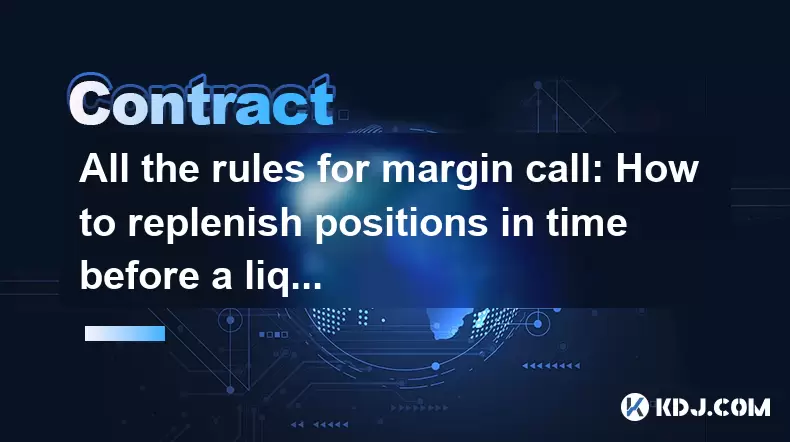
What is a Margin Call in Cryptocurrency Trading?
In cryptocurrency trading, especially on margin or futures platforms, a margin call occurs when the equity in your trading account falls below the required maintenance margin level. This situation typically arises due to adverse price movements against your open positions. When this happens, the exchange or broker issues a margin call, which serves as a warning that you must deposit additional funds or reduce your position size to meet the minimum margin requirements.
Failure to respond to a margin call promptly can lead to an automatic liquidation of your position by the platform to cover potential losses. This mechanism protects the exchange from taking on excessive risk while also safeguarding the trader’s remaining capital.
Understanding Maintenance and Initial Margin Requirements
Before diving into how to replenish positions before liquidation, it's essential to understand two key terms: initial margin and maintenance margin.
- Initial margin refers to the percentage of the total investment required to open a leveraged position.
- Maintenance margin is the minimum amount of equity that must be maintained in the account to keep the position open.
For example, if you're trading Bitcoin with 10x leverage, you might need to maintain at least 5% of the total position value in your account equity. If the market moves against you and your equity drops below this 5%, a margin call is triggered.
How to Monitor Your Account for Margin Calls
Proactive monitoring is crucial in preventing forced liquidations. Most exchanges provide real-time dashboards that display:
- Current equity
- Free margin
- Margin used
- Liquidation price
These metrics are often color-coded or come with alerts. You should enable push notifications or email alerts for margin calls directly within your trading platform settings. Some advanced traders use third-party tools or bots that integrate with APIs to monitor their portfolios across multiple exchanges simultaneously.
Additionally, always pay attention to the liquidation price of your position. If the current market price approaches this threshold, it's a strong indicator that you're at risk of being liquidated unless action is taken immediately.
Steps to Replenish Positions Before Liquidation
When a margin call is issued, there are several actions you can take to avoid liquidation:
- Deposit additional funds: Transfer more cryptocurrency or fiat into your trading account to increase your equity.
- Reduce position size: Close part of your open position to lower the margin requirement.
- Add collateral manually: On some platforms, you can add more assets as collateral without increasing your cash balance.
- Adjust leverage: Lowering your leverage reduces the margin needed to hold the position.
- Close other positions: Profits from other successful trades can help offset losses and improve your overall margin status.
Each of these steps requires quick decision-making and execution. It's vital to act before the system automatically closes your trade at the liquidation price, which may occur at a less favorable rate than what you could achieve manually.
Best Practices to Avoid Margin Calls Altogether
While knowing how to respond to a margin call is important, avoiding them entirely is even better. Here are some strategies:
- Use conservative leverage: High leverage increases both profit potential and risk. Stick to lower leverage ratios unless you have a well-tested strategy.
- Set stop-loss orders: These help limit downside risk and prevent unexpected margin calls.
- Diversify your portfolio: Don't put all your capital into one leveraged trade.
- Maintain sufficient free margin: Always keep extra funds available in your account to cushion against sudden market swings.
- Understand volatility: Cryptocurrencies are known for sharp price movements. Be prepared for rapid changes in your equity levels.
By following these practices, you can significantly reduce the likelihood of facing a margin call during normal market conditions.
FAQs
Q: What happens if I ignore a margin call?
A: Ignoring a margin call typically results in the automatic liquidation of your position by the exchange. This process is designed to protect both the trader and the platform from further losses.
Q: Can I receive a margin call even if I’m not actively trading?
A: Yes, if you have open leveraged positions or futures contracts, you can still receive a margin call even when not actively placing trades. Price movements while you're offline can trigger margin alerts.
Q: Is there a way to automate responses to margin calls?
A: Some advanced trading platforms allow users to set up auto-deposit features or integrate bots that can automatically close positions or add funds upon detecting a margin call.
Q: Do all exchanges handle margin calls the same way?
A: No, different exchanges have varying policies regarding margin calls and liquidation procedures. Always review the specific rules of the platform you're using before opening leveraged positions.
Disclaimer:info@kdj.com
The information provided is not trading advice. kdj.com does not assume any responsibility for any investments made based on the information provided in this article. Cryptocurrencies are highly volatile and it is highly recommended that you invest with caution after thorough research!
If you believe that the content used on this website infringes your copyright, please contact us immediately (info@kdj.com) and we will delete it promptly.
- DOGE, $PEPE Alongside $BONK and FLOKI Could Reach Returns from 5x to 100x
- 2025-06-15 01:50:13
- Kitchener Clinic parking fees going up on May 1
- 2025-06-15 01:50:13
- BetMGM Bonus Code CUSE150 Delivers Upgraded Promos for Warriors vs. Rockets and Timberwolves vs. Lakers Game 5
- 2025-06-15 01:45:13
- May 2025's Hottest Pre-Sale Tokens Are Ready to Explode
- 2025-06-15 01:45:13
- Web3 Leaders Praise UnionBank Crypto Rollout, Eyeing Corporate Integration
- 2025-06-15 01:40:12
- Australia's financial regulator is going after inactive crypto companies still appearing on official lists
- 2025-06-15 01:40:12
Related knowledge
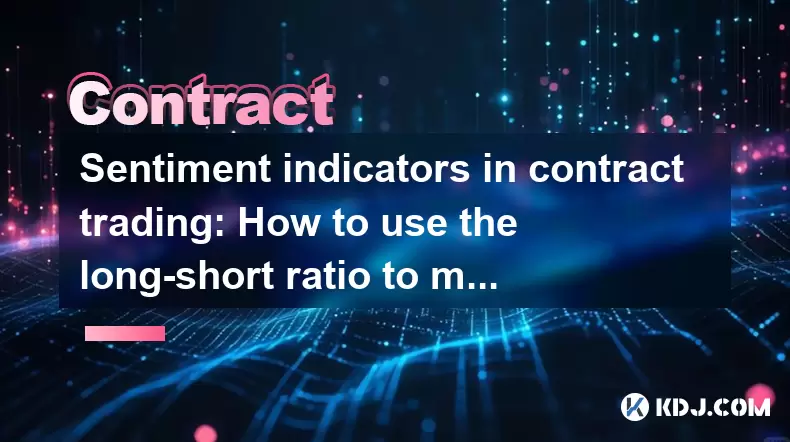
Sentiment indicators in contract trading: How to use the long-short ratio to make decisions?
Jun 14,2025 at 07:00am
What Are Sentiment Indicators in Contract Trading?In the realm of cryptocurrency contract trading, sentiment indicators play a crucial role in gauging market psychology. These tools help traders understand whether the market is dominated by bullish or bearish expectations. Among these indicators, the long-short ratio stands out as one of the most tellin...
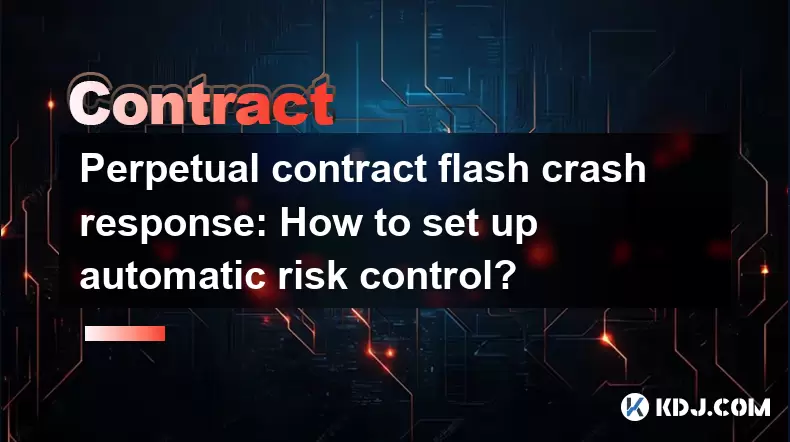
Perpetual contract flash crash response: How to set up automatic risk control?
Jun 13,2025 at 06:28pm
Understanding Perpetual Contract Flash CrashesA flash crash in the context of perpetual contracts refers to a sudden, sharp, and often short-lived drop or spike in price due to high volatility, thin order books, or algorithmic trading activities. These events can lead to massive liquidations across long or short positions on trading platforms. Traders m...
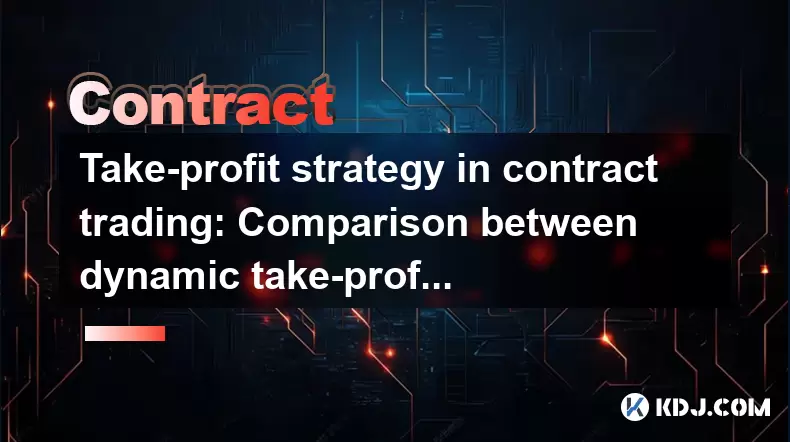
Take-profit strategy in contract trading: Comparison between dynamic take-profit and fixed take-profit
Jun 14,2025 at 07:08am
What Is Take-profit in Contract Trading?In the realm of cryptocurrency contract trading, take-profit refers to a predefined price level at which a trader automatically closes a profitable position. This mechanism is essential for risk management and profit locking. Traders use take-profit orders to ensure they secure gains without being swayed by emotio...
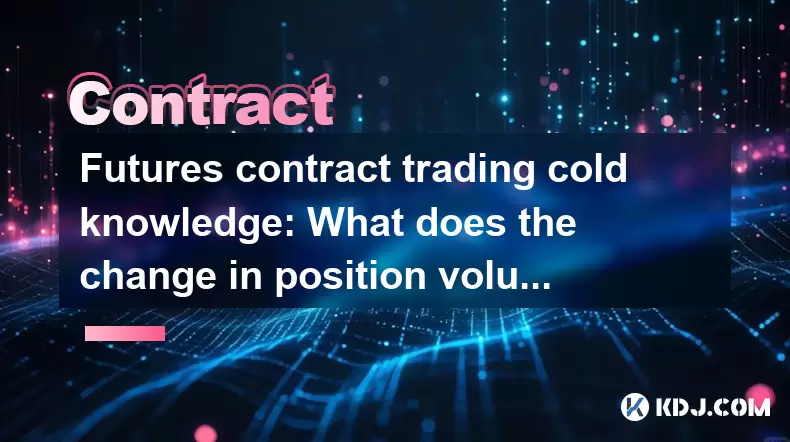
Futures contract trading cold knowledge: What does the change in position volume indicate?
Jun 14,2025 at 09:22pm
Understanding Position Volume in Futures Contract TradingIn the world of futures contract trading, position volume is a key metric that often goes overlooked by novice traders. Unlike simple price or volume indicators, position volume reflects the total number of open contracts at any given time. This metric provides insights into market sentiment and c...
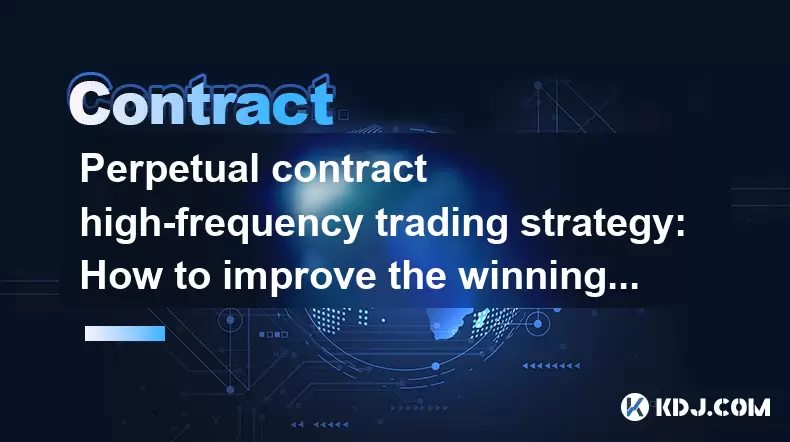
Perpetual contract high-frequency trading strategy: How to improve the winning rate of short-term brushing?
Jun 13,2025 at 04:14pm
Understanding the Basics of Perpetual ContractsPerpetual contracts are derivative financial instruments that allow traders to speculate on the price movement of an asset without owning it. Unlike traditional futures, perpetual contracts have no expiration date, making them ideal for short-term trading strategies like high-frequency trading (HFT). In the...
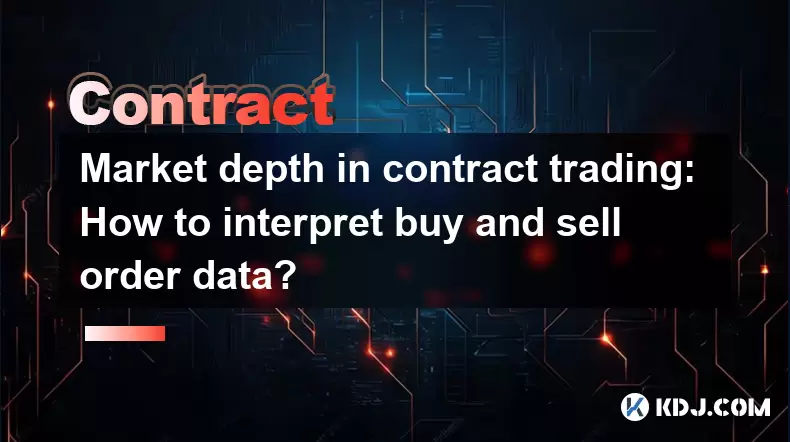
Market depth in contract trading: How to interpret buy and sell order data?
Jun 14,2025 at 02:57pm
Understanding Market Depth in Contract TradingMarket depth, often referred to as the order book depth, is a crucial concept in contract trading, especially within cryptocurrency markets. It represents the total number of buy and sell orders at various price levels for a specific asset. This data provides traders with insight into market liquidity, poten...

Sentiment indicators in contract trading: How to use the long-short ratio to make decisions?
Jun 14,2025 at 07:00am
What Are Sentiment Indicators in Contract Trading?In the realm of cryptocurrency contract trading, sentiment indicators play a crucial role in gauging market psychology. These tools help traders understand whether the market is dominated by bullish or bearish expectations. Among these indicators, the long-short ratio stands out as one of the most tellin...

Perpetual contract flash crash response: How to set up automatic risk control?
Jun 13,2025 at 06:28pm
Understanding Perpetual Contract Flash CrashesA flash crash in the context of perpetual contracts refers to a sudden, sharp, and often short-lived drop or spike in price due to high volatility, thin order books, or algorithmic trading activities. These events can lead to massive liquidations across long or short positions on trading platforms. Traders m...

Take-profit strategy in contract trading: Comparison between dynamic take-profit and fixed take-profit
Jun 14,2025 at 07:08am
What Is Take-profit in Contract Trading?In the realm of cryptocurrency contract trading, take-profit refers to a predefined price level at which a trader automatically closes a profitable position. This mechanism is essential for risk management and profit locking. Traders use take-profit orders to ensure they secure gains without being swayed by emotio...

Futures contract trading cold knowledge: What does the change in position volume indicate?
Jun 14,2025 at 09:22pm
Understanding Position Volume in Futures Contract TradingIn the world of futures contract trading, position volume is a key metric that often goes overlooked by novice traders. Unlike simple price or volume indicators, position volume reflects the total number of open contracts at any given time. This metric provides insights into market sentiment and c...

Perpetual contract high-frequency trading strategy: How to improve the winning rate of short-term brushing?
Jun 13,2025 at 04:14pm
Understanding the Basics of Perpetual ContractsPerpetual contracts are derivative financial instruments that allow traders to speculate on the price movement of an asset without owning it. Unlike traditional futures, perpetual contracts have no expiration date, making them ideal for short-term trading strategies like high-frequency trading (HFT). In the...

Market depth in contract trading: How to interpret buy and sell order data?
Jun 14,2025 at 02:57pm
Understanding Market Depth in Contract TradingMarket depth, often referred to as the order book depth, is a crucial concept in contract trading, especially within cryptocurrency markets. It represents the total number of buy and sell orders at various price levels for a specific asset. This data provides traders with insight into market liquidity, poten...
See all articles

























































































